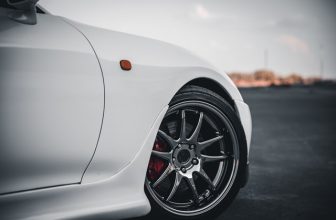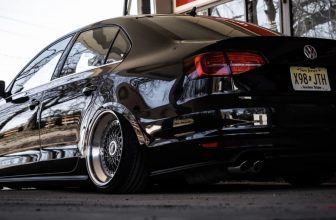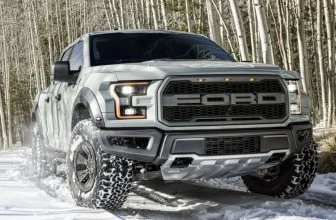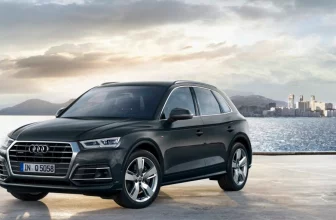How do trucks, SUVs and crossovers survive winter? Are drivers confident and at ease behind the steering on snow-covered public roads? Do they have fun or just a grumbly ride? When winter hits, even the best-performing vehicles struggle.
Luckily, drivers have access to winter tires to improve the driving experience. Manufacturers optimize brands for specific vehicles. Light Truck or SUV studless Ice & snow tires provide top-of-the-range snow traction with remarkable load-bearing capacities giving drivers memorable winter driving experiences.
How do you identify the best studless ice and snow tires for trucks? What desirable features does one have to evaluate before making a purchase? Do the tires differ from standard winter tires? These tires provide superb winter traction to inspire confidence and safety among drivers. Venturing into roads with thick snow layers in regions that restrict the use of studded ice and snow tires shouldn’t be a problem for any driver.
We delve into the finer details of the best winter tires for trucks, providing you with unbiased recommendations. We also compare the performance of these tires against competing tire categories. Our goal is to improve your tire shopping experience and ensure that you find the best deal for your car. Winter driving shouldn’t be scary. Load up your light truck, SUV or crossover and face the winter harshness head-on.
| Tire name | Winter/snow performance | Steering response | Wet performance | Hydroplaning resistance | Wet traction | Dry performance | Cornering stability | Dry traction | Comfort performance | Ride quality | Noise score | Treadwear performance |
|---|---|---|---|---|---|---|---|---|---|---|---|---|
| Bridgestone Blizzak DM-V2 | 9.5 | 8.6 | 9.2 | 9.2 | 9.2 | 8.7 | 8.6 | 9.1 | 8.9 | 9.2 | 8.6 | 8.4 |
| Yokohama iceGUARD iG51v | 9.3 | 8.7 | 9.1 | 9.1 | 9.1 | 8.8 | 8.7 | 8.9 | 8.3 | 8.7 | 7.9 | 8.8 |
| Bridgestone Blizzak W965 | 8.9 | 8 | 8.7 | 8.7 | 8.8 | 8.1 | 7.9 | 8.5 | 8.1 | 8.1 | 8 | 7.7 |
| Pirelli Scorpion Winter | 8.8 | 8.9 | 9.2 | 9.3 | 9.2 | 9 | 8.9 | 9.1 | 8.8 | 9 | 8.6 | 8.3 |
| Pirelli Scorpion Ice & Snow | 8.8 | 8.5 | 8.9 | 8.9 | 9 | 8.6 | 8.4 | 8.8 | 8.3 | 8.5 | 8.2 | 8.4 |
| Yokohama Geolandar I/T G072 | 8.7 | 8.5 | 8.8 | 8.7 | 8.9 | 8.6 | 8.5 | 8.8 | 8.4 | 8.8 | 8.1 | 8.1 |
| Michelin Latitude X-Ice Xi2 | 8.4 | 8.3 | 8.7 | 8.6 | 8.7 | 8.5 | 8.4 | 8.7 | 8.8 | 9 | 8.6 | 8.8 |
| Pirelli Scorpion Ice & Snow Run Flat | 8.2 | 8.3 | 8.5 | 8 | 9.1 | 8.2 | 8 | 8.5 | 8 | 8.3 | 7.8 | 5.6 |
| Michelin LTX Winter | 8.2 | 8.7 | 8.7 | 8.9 | 8.5 | 8.7 | 8.5 | 8.8 | 9 | 9 | 8.9 | 8.7 |
Why Choose Studless Winter Tires for Snow
How do you identify the best winter tires for trucks or SUVs, considering the availability of several tire choices for winter driving? Nonetheless, studless winter tires for trucks stand out among the pack.
Their performances are nothing short of exceptional. Manufacturers optimize the tire designs, load-bearing capacities and use the best rubber materials so that drivers can enjoy safe rides on the abnormally slippery winter roads. These are some of the characteristics and features that define the best winter tires for trucks.
Flexible yet sturdy tread material
Rubber hardens when the temperature of the surroundings drops. Now, imagine the level of deformation on the tires when the winter falls. Of course, if you live in regions experiencing winter, you may realize that summer tires stiffen at the onset of winter. Very few drivers can survive the treacherous conditions.
Driving challenges compound when you have to haul or carry loads on your light truck or SUV. Studless winter tires adapted for snow need a resilient tread compound that cannot stiffen even at sub-zero temperatures.
The tires support heavy loads, withstand internal stress and strain. The flexibility of the tread material ensures that the tires have sufficient winter traction for better handling. Usually, manufacturers use thick layers of flexible rubber beneath the treads and optimize the tread patterns. They join the rubber layers using advanced technology so that they do not separate during the coldest seasons.
The rubber materials contribute immensely to the longevity of these tires. Manufacturers mix the primary rubber with special additives to enhance cold resistance and improve their wear- and tear-resistance capabilities. That way, drivers can re-use the winter tires for several years. The tread material and design give the best winter tires for trucks an extra advantage. It improves its dry traction.
3 PMSF symbol
How do you verify that tires are fit for the worst winter conditions? Are assurances by the salesperson enough? No. that is why studless ice and snow tires undergo rigorous safety and traction tests. Tires that meet the test criteria get the 3-peak mountain snowflake symbol on the sidewalls. The best winter tires for trucks must have this symbol. With this symbol, drivers are aware that vehicles respond well to braking and steering controls.
Deep grooves
The ultimate performance of light trucks and SUVs in winter depends on the tires’ defense against hydroplaning. That is only possible if the tires have well-positioned lateral and circumferential grooves. The grooves guarantee optimal evacuation and redirection of water on the road for the tires to retain maximum traction on the tarmac. In return, drivers maintain control over the steering and braking characteristics of the vehicle.
Other desirable features
You don’t have to drive at a snail’s pace because snow or ice is covering the roads. The best winter tires for trucks provide optimal traction giving drivers the power to push their vehicles to high speeds. Most studless ice and snow tires have superior speed ratings in the range of Q, R, S, T and H. Drivers can safely drive at speeds above 100 mph.
Increasing winter traction requires the incorporation of well-spaced, well-sized sipes over the entire circumference of the tire. Studless Ice and Snow tires have full-depth sipes that increase the quantities of biting edges for better snow-on-snow traction.
How Studless Ice & Snow Tires Compare to other tires
Drivers can use all-terrain all-season, touring tires and studded tires for winter driving. Studless winter tires provide better performance than most of these categories.
All-terrain all-season tires have excellent load-bearing capacities and sufficient traction and can provide dependable performance in light snow. Traction efficiency relies solely upon aggressive tread patterns. However, as the thickness of snow increases, the performance of the tires becomes erratic. The same applies to highway tires.
Studded winter tires offer impressive winter traction that matches that of studless winter tires. However, their usage is limited to certain states and countries, making light truck/SUV studless Ice and Snow tires the best choice for most drivers.
Verdict
Light Truck or SUV studless Ice and Snow tires are the best options for drivers living in areas that experience extreme winter conditions. The tires provide superior traction, better handling and responsiveness.
Frequently Asked Questions
Can I use Studless Ice and Snow tires in summer?
Although the tires have good wet and dry traction, they should not be used in warm weather. The rubber tends to wear faster when the weather is warmer.
How fast can one drive when using Studless Ice and Snow tires?
These tires have superior speed ratings. However, driving fast in winter is unsafe. Monitor the conditions of the road and drive at lower speeds than usual so that you can respond well to emergencies.






